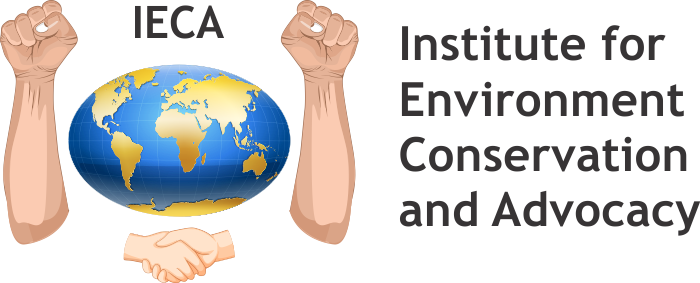- Involves activities, outdoor learning, and real-world experiences.
- Integrates environmental education into existing subjects.
- Involves students in nature exploration.
- Partners with local organizations.
- Encourages long-term environmental projects.
- Fosters critical thinking through reflection and discussion.
- Ensures program effectiveness through continuous improvement and assessment strategies.
- Promotes environmentally friendly practices.
- Encourages experiential learning.
- Enhances indoor air quality.
- Promotes cost savings.
- Fosters community engagement and resilience.
- Integrates sustainability into curriculum.
- Planning and designing gardens.
- Preparing soil for planting.
- Caring for the garden.
- Harvesting and tasting.
- Journaling.
- Incorporating art and creativity.
- Using the garden for community outreach and education.
- Understanding soil health, sustainable practices, and nutritional value.
- Waste audits and collection programs.
- Upcycling workshops.
- Recycled art projects.
- Electronic waste recycling drives.
- Recycled fashion show.
Environmental education program teaches students about composting, including its process, construction, ingredients, and demonstrations. It also includes waste audits, monitoring and maintenance, testing and analysis, and application. The program also promotes compost education and outreach, integrating composting activities into the curriculum to educate students, teachers, and the campus community about its benefits.
- Bird watching, animal tracking, habitat exploration.
- Insect study, nature photography, wildlife monitoring.
- Field sketching, citizen science projects, nature scavenger hunts.
- Outdoor classroom activities.
- Encourages observation, record-keeping, data analysis..
- Systematic energy audit to frame energy policy.
- Building-wise strategies: increasing heating and cooling efficiency, improving insulation, scheduling efficiency, alternative transportation, and tree planting.
- Engagement of an energy manager for audits and capital expenditure allocation.
- Staff installation of meters for measuring heat, electricity, and water use.
- Creation of incentives for energy-efficiency, investment in energy-efficient technologies, campus leak monitoring, and coordinated practices.
- Activities for students include campus audits, data collection, building walkthroughs, renewable energy assessments, behavioral change campaigns, energy monitoring, green building design projects, and community outreach.
Upcycling workshops for students cover waste reduction, resource conservation, and environmental sustainability. They provide an introduction to upcycling, materials, project ideas, design and planning, workshops, demonstrations, peer collaboration, exhibitions, reflection, and competitions. The workshops encourage creativity, innovation, and environmental sustainability, with a focus on waste reduction, resource conservation, and the use of recyclable materials.
- Fosters deeper connection to nature.
- Promotes experiential learning.
- Raised environmental awareness on biodiversity loss, habitat degradation, pollution, and climate change.
- Fosters critical thinking, problem-solving skills, environmental literacy, and citizenship.
- Fosters sensory and emotional experiences.
- Activities include field trips, guided nature walks, pond or stream studies, beach clean-ups, tree planting, nature journaling, birdwatching, and outdoor science experiments.
Students can engage in project-based learning to address environmental issues. They can design a sustainable garden, conduct a waste audit, develop a water conservation project, develop an energy efficiency initiative, and restore habitats. They can also develop a pollution prevention campaign and a climate action project to address specific environmental issues. These projects help students develop sustainable practices, reduce waste, and promote sustainability. By collaborating with local stakeholders, students can contribute to a more sustainable future.
Students can address environmental issues in their communities through environmental initiatives. They can identify and address environmental challenges by research and planning, collaboration, project implementation, awareness, activities, evaluation, and sustainability.
Educators can foster community-based research projects and partnerships with local organizations, government agencies, and non-profit groups to address environmental issues. This not only enhances students' academic and career prospects but also empowers them to make positive contributions to the environment and society.
- Provides experiential learning experiences.
- Encourages community engagement and personal development.
- Involves identifying challenges, collaborating with community partners, designing activities, providing training, and facilitating reflection.
- Promotes sustainability practices and engages in advocacy and education.
- Empowers students to protect resources, reduce pollution, and promote sustainability.
Workshops on sustainable agriculture, renewable energy, and conservation techniques may include interactive activities, guest speakers, and resources. The workshops encourage collaboration, reflection, and fieldwork, allowing students to observe sustainable practices in action. It also encourages action and follow-up for students.
- Conduct biodiversity surveys.
- Conduct soil analysis.
- Conduct water quality testing.
- Monitor weather and plant growth.
- Conduct insect surveys.
- Conduct bird watching.
- Conduct solar energy experiments.
- Monitor air quality.
- Conduct ecological restoration projects.
- Conduct composting experiments.
Climate education involves activities, real-world experiences, and interactive learning opportunities to understand climate change. Activities include outdoor field trips, climate simulations, science experiments, community-based projects, and real climate data analysis. Indigenous knowledge and perspectives are incorporated, and students are encouraged to develop and implement climate action projects. Carbon footprint calculations are also included.
A Green Campus approach aims to reduce carbon footprint by focusing on waste management, purchasing choices, and energy consumption. This includes purchasing from local vendors, choosing eco-friendly products, using sustainable transportation, and establishing recycling facilities. The Purchasing Officer should be trained to monitor carbon footprint in purchasing, and the campus should also consider purchasing from environmentally friendly vendors.
- Environmental indicators: land use, biodiversity conservation, water quality, soil health, climate resilience, community well-being, livelihood diversity, social equity, governance, and social capital.
- Economic indicators: income and employment trends, economic diversification, value chain development, access to infrastructure, and financial inclusion.
- Institutional and policy indicators: policy alignment, institutional capacity, stakeholder engagement.
- Focusing on these indicators aids in achieving sustainable development in rural communities.
involves raising public awareness, promoting hygiene, providing information on water quality and treatment, educating communities about sanitation facilities, and educating about environmental protection. It also involves community participation, training, and capacity building. Communication strategies, such as storytelling and role-playing, can influence attitudes and norms. Monitoring and evaluation mechanisms are essential for assessing the impact of these interventions.
Offer valid only for new email subscribers. Enter your email address and receive 15% off your first order and a promo code will be sent to your inbox. Exclusions apply.

 Call :
Call :